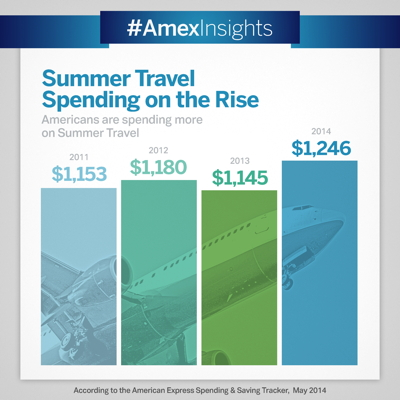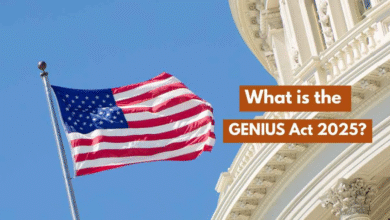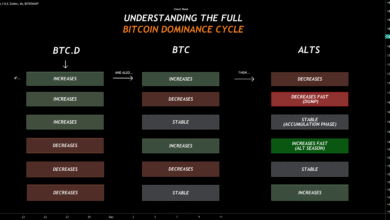American Express Spending Trends: Insights and Analysis

American Express spending trends reveal a fascinating landscape where affluent customers maintain their high-level spending habits, despite fluctuations in specific sectors. The latest report indicates that while overall spending on American Express cards saw a commendable 7% increase, travel spending has taken a hit, especially in economy class domestic airfare. This decline in American Express travel spending is crucial, as it reflects the broader economic impact on spending behaviors among premium credit card users. With the competitive nature of credit card companies amplifying, it is imperative to analyze how spending patterns evolve in response to airfare price trends and changing consumer preferences. As this trend unfolds, understanding the implications for American Express and its affluent clientele becomes increasingly vital.
Examining consumer expenditure patterns, particularly among premium financial service providers, highlights significant shifts in travel-related purchases. American Express has consistently attracted wealthy clients who value their extensive travel benefits, yet current data shows a downturn in travel spending. Affluent users seem to be reallocating their budgets, focusing less on airline tickets due to recent decreases in airfare prices. This shift signals a vital discussion about the economic influences shaping consumer choices in luxury spending. As competitive dynamics among credit card firms intensify, it’s essential to explore how these changes affect affluent customers and the market at large.
American Express Spending Trends: An Overview
American Express has consistently positioned itself as a beacon for affluent consumers, leading to notable spending trends that reflect the spending habits of wealthier individuals. The company’s latest report illustrates a 7% increase in total card spending, matching the growth seen in the previous quarter and marking a 6% rise compared to the same quarter last year. This sustained growth is significant, especially in a landscape where economic uncertainties often challenge consumer confidence. By catering to affluent customers who value exclusive benefits and perks, such as premium travel rewards and dining experiences, American Express has managed to maintain a robust spending trend.
However, it is essential to note that while overall spending appears strong, there has been a noticeable divergence in categories, particularly in travel spending. The recent second-quarter results revealed that travel spending lagged behind other expenditures, mainly due to stagnant airline ticket purchases which did not show any growth compared to the previous year. This trend may be a reflection of broader economic impacts affecting consumer behavior, causing affluent customers to rethink their travel plans amidst fluctuating airfare prices while still indulging in other luxury goods and services.
The Economic Impact on American Express Travel Spending
The relationship between economic factors and spending patterns is intricate, especially for a premium service provider like American Express. Despite the general robustness in card spending, travel spending is experiencing a significant downturn, primarily due to an unexpected drop in economy class airfare that consumers are witnessing. With a reported 3.5% decrease in airfare as reported by the Bureau of Labor Statistics, travelers are spending less, indicating a shift in how economic impacts are reshaping travel habits, even among affluent customers who ordinarily may not feel such pressures.
This decline in airfare signifies broader economic trends that may discourage even affluent consumers from spending as freely on travel as they once did. As inflation rises and the cost of living increases, many consumers are prioritizing expenses, leading to less discretionary spending on travel. Consequently, American Express has to navigate this economic landscape carefully, ensuring that its offerings remain appealing to affluent customers while adapting strategies to mitigate the impacts of fluctuating travel trends.
The Role of Credit Card Companies in Travel Spending
Credit card companies like American Express play a crucial role in shaping consumer spending behaviors, particularly in the travel sector. They offer various incentives, rewards programs, and partnerships with airlines and hotels, aiming to entice affluent customers to spend more on travel. However, with the current challenges posed by declining airfare and stagnant travel spending, credit card companies must innovate to maintain interest among their users. The pressure to enhance rewards for travel spending becomes paramount as customers look for greater value in their expenses.
As competition intensifies among credit card firms, such as JPMorgan Chase and Capital One, the need for American Express to differentiate itself has never been more critical. By reinforcing its connections with luxury travel experiences and exclusive airport lounges, American Express can offer unique value propositions that set it apart from its competitors. This strategy not only helps to retain existing affluent customers but also attracts new ones seeking premium travel experiences, particularly during times of economic uncertainty.
Airfare Price Trends and Consumer Behavior
Airfare price trends significantly influence consumer behavior, affecting how and when people choose to travel. The recent decline in economy class domestic airfare has been alarming, showing a 3.5% drop over the past year, which has led to less spending on travel overall. For American Express, which thrives on travel-related expenses, this continuing trend poses a challenge. With consumers spending less on airfare, their overall travel budgets shrink, impacting supplementary spending on services tied to travel, such as dining and accommodation.
Moreover, this decline exemplifies a shift in priorities for many travelers, who may be opting for more budget-friendly options or postponing their travel plans altogether. This evolving consumer behavior underscores the need for American Express to adjust its strategies in marketing travel incentives, ensuring they align with current consumer sentiments. By addressing these airfare price trends and adapting their offerings to meet changing preferences, American Express can remain a key player in the travel industry while enticing high-value customers.
Investor Concerns and Future Strategies for American Express
Despite posting strong profit and revenue results, American Express is facing scrutiny from investors, particularly regarding the sustainability of its growth amidst changing consumer spending trends. Growing concerns about the travel spending downturn correlate with investor fears that the company may have to increase its investment in rewards programs to spur spending. Even though Amex has reaffirmed its guidance for 2025, these competitive pressures and the need to innovate within the premium card market remain pivotal.
As American Express prepares to launch a revamped Platinum card, it’s crucial that the company reassesses its strategy to attract and retain affluent customers who seek exceptional value. Emphasizing distinctive benefits and unique travel experiences can enhance loyalty among high-spending clients. Furthermore, addressing investor concerns through transparency and proactive communication about growth strategies can help mitigate stock volatility and reinforce confidence in the company’s direction.
Affluent Customers: American Express’s Core Audience
The target demographic for American Express centers around affluent customers who prioritize exceptional service and exclusive advantages. This audience tends to be more discerning in their spending, often valuing quality over quantity, which can impact their travel-related spending habits. It is essential for American Express to deepen its understanding of this clientele’s preferences and adapt its offerings accordingly, especially in light of diminishing travel spending trends.
Engaging with affluent customers requires a tailored approach. American Express must leverage insights and analytics to develop personalized rewards and benefits that resonate with this demographic. Whether through curated travel experiences or premium dining offers, the ability to innovate and provide unique experiences will be crucial in sustaining customer loyalty and encouraging ongoing spending.
Challenges Facing American Express in the Premium Card Market
The competitive landscape of the premium card market is shifting, with several financial institutions vying for the attention of affluent customers. American Express faces fierce competition from companies like JPMorgan, Capital One, and Citigroup, each of which has tailored rewards programs aimed at attracting high-value consumers. As these competitors introduce innovative features and incentives, American Express must stay ahead of trends to maintain its market position.
To address these challenges, American Express will need to enhance its customer engagement strategies and continuously refine its rewards structures. By focusing on building robust relationships and loyalty programs that truly resonate with affluent consumers, American Express can fend off competition and continue to be a leader in the premium credit card space. Investing in customer feedback and satisfaction will also be pivotal to ensure that their offerings remain relevant and enticing.
Future Outlook for American Express: Adapting to Consumer Trends
Looking ahead, American Express must remain agile in the face of changing consumer trends, especially as travel spending fluctuates. Understanding the implications of economic shifts on customer behavior will be vital, allowing the company to adapt its business strategies accordingly. While the current decline in travel spending presents challenges, it also offers opportunities for innovation within the company’s offerings.
By focusing on enhancing flexibility in rewards programs and emphasizing unique travel perks, American Express can continue to attract affluent customers while fostering loyalty in a competitive market. Furthermore, proactively addressing investor concerns and highlighting positive revenue trends can bolster confidence in the company’s future prospects, solidifying its position as a leader in the credit card industry.
Frequently Asked Questions
What are the recent American Express spending trends in travel compared to other goods and services?
Recent trends indicate that American Express travel spending has weakened compared to spending on goods and services. In the latest quarter, Amex reported a 7% overall increase in spending on its cards, but travel spending lagged notably, particularly due to stagnant economy class domestic airfare prices.
How do American Express travel spending trends affect affluent customers?
American Express focuses on affluent customers who are attracted to its travel and dining perks. While overall spending remains strong, the recent travel spending trends show a decline, particularly in airfare, which could impact the perceived value of benefits for these high-income clients.
What is the economic impact on American Express spending trends due to airfare price decreases?
The economic impact on American Express spending trends is evident from the reported 3.5% drop in airfare prices, which has led to reduced spending on ticket purchases among consumers. This decline in travel spending has raised concerns, as it could affect loyalty and spending among Amex’s affluent customer base.
How is American Express adapting to current spending trends in the credit card market?
In light of current spending trends, including increased competition from other credit card companies like JPMorgan and Capital One, American Express is revamping its Platinum card to enhance rewards programs. This initiative aims to attract and retain affluent customers despite the challenges posed by weak travel spending.
What role do airfare price trends play in American Express’s travel spending performance?
Airfare price trends have a significant impact on American Express’s travel spending performance. The stagnation and recent decrease in economy class domestic airfare have contributed to a decline in travel-related spending, highlighting the delicate balance between airline prices and consumer spending habits.
| Key Point | Details |
|---|---|
| Travel Spending Weakness | Travel spending was weaker compared to good and services, especially in economy class domestic airfare. |
| Spending Growth | Total spending on Amex cards increased by 7%, matching the growth of the previous quarter and exceeding last year’s rise of 6%. |
| Airfare Decline | Airfare prices have decreased by 3.5% in June compared to last year, impacting consumer spending. |
| Company Performance | Despite exceeding profit and revenue expectations for Q2 2025, Amex shares fell by 2.7%. |
| Competitive Market | Amex faces increased competition from firms like JPMorgan and Citigroup in the premium card market. |
Summary
American Express spending trends show that affluent customers continue to engage with the brand, although recent data indicates a notable decline in air travel spending. While overall spending on American Express cards increased by 7%, travel expenses lagged behind the growth rate seen in other goods and services. This can primarily be attributed to a significant drop in economy class domestic airfare, impacting revenue from travel-related perks. As Amex navigates a highly competitive landscape, understanding these trends is crucial for optimizing its services and retaining its affluent clientele.




